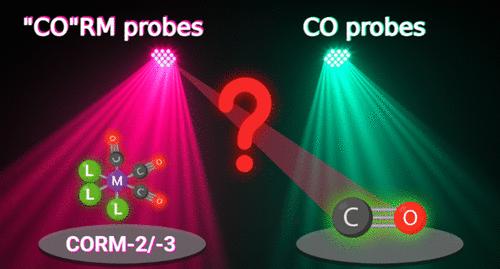A Tale of Two Cities in Fluorescent Sensing of Carbon Monoxide: Probes That Detect CO and Those That Detect Only Chemically Reactive CO Donors (CORMs), but Not CO
IF 4.3
3区 材料科学
Q1 ENGINEERING, ELECTRICAL & ELECTRONIC
引用次数: 0
Abstract
Carbon monoxide (CO) is endogenously produced with a range of pharmacological activities. Sensitive and selective detection of CO is critical to studying its biology. Since the first report of a CO fluorescent probe in 2012, more than 100 papers on this topic have appeared. Noteworthy in such work is the widespread use of two commercially available ruthenium–carbonyl complexes (CORM-2 and CORM-3) as CO surrogates. Unfortunately, these two CORMs are chemically very reactive and preferentially release CO2 but not CO, unless in the presence of a nucleophile. As a result, there are “two tales” of the reported CO probes: those that detect CO and those that detect only the CORM used but not CO. In addition, because of their lack of reliable CO production and fast degradation in an aqueous solution, there is the question of what “detecting CORM-2 or CORM-3” really means in the context of CO research. Additionally, for applying fluorescent CO probes in detecting low levels (often nanomolar) of CO in vivo, fast reaction kinetics is a prerequisite for meaningful results. In this Perspective, we discuss in detail these issues with the understanding of the evolutionary nature of scientific discoveries and the aim of preventing further confusion.

一氧化碳荧光传感的双城记:检测一氧化碳的探针和只检测一氧化碳化学反应供体 (CORM) 而不检测一氧化碳的探针
一氧化碳(CO)是一种内源性物质,具有多种药理活性。灵敏、选择性地检测一氧化碳对研究其生物学特性至关重要。自 2012 年首次报道 CO 荧光探针以来,已有 100 多篇相关论文发表。其中值得注意的是,两种市售的钌羰基复合物(CORM-2 和 CORM-3)被广泛用作 CO 的替代物。遗憾的是,这两种 CORM 的化学反应性很强,除非有亲核剂存在,否则会优先释放出 CO2,而不是 CO。因此,所报道的一氧化碳探针存在 "两种说法":一种是检测一氧化碳,另一种是只检测所使用的 CORM 而不检测一氧化碳。此外,由于这些探针在水溶液中缺乏可靠的 CO 生成和快速降解能力,在 CO 研究中,"检测 CORM-2 或 CORM-3 "到底意味着什么就成了问题。此外,要应用荧光 CO 探针检测体内低浓度(通常为纳摩尔级)的 CO,快速反应动力学是获得有意义结果的先决条件。在本《视角》中,我们将详细讨论这些问题,以了解科学发现的演变性质,并防止出现进一步的混淆。
本文章由计算机程序翻译,如有差异,请以英文原文为准。
求助全文
约1分钟内获得全文
求助全文

 求助内容:
求助内容: 应助结果提醒方式:
应助结果提醒方式:


